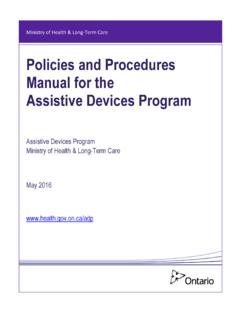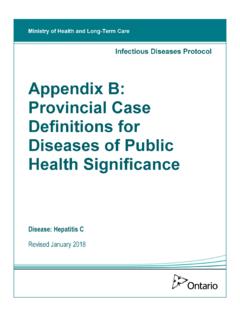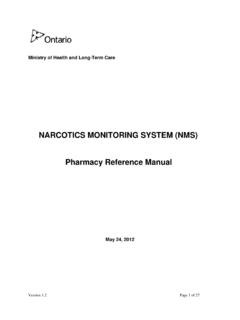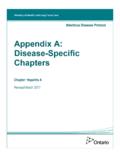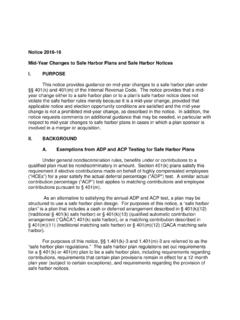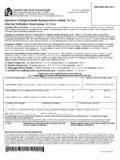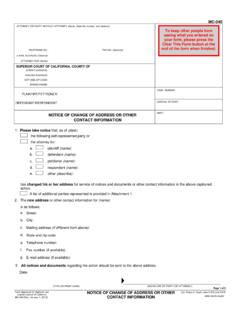Transcription of Questions and Answers for Pharmacists: Regulation ...
1 Ontario Public Drug Programs, Ministry of Health and Long-Term Care Regulation Amendments in support of Sustainability and Access for the Ontario Drug Benefit Program Questions and Answers for Pharmacists Responsible management of health care is part of the government s plan to build a better Ontario through its Patients First: Action Plan for Health Care, providing patients with faster access to the right care, better home and community care, the information they need to live healthy and a health care system that s sustainable for generations to come.
2 The Ministry of Health and Long-Term Care (the ministry ) is making changes to pharmacy payments, fees and program policies under the Ontario Drug Benefit (ODB) program to make the program more efficient, effective and responsive to today s patients. These initiatives represent a fair and balanced approach to generating savings and will contribute to the Province s efforts to identify short- and longer-term opportunities to ensure continued patient access to drugs. These changes will enable the government to achieve savings of over $200 million annually when fully implemented, as per the 2015 Ontario Budget.
3 Amendments to Ontario Regulation 201/96 made under the Ontario Drug Benefit Act will come into force on October 1, 2015 to support these ODB program changes. Updates to the ministry s Health Network System (HNS) will support these changes, where applicable and available. All initiatives will be enforced in the manner outlined below. For more information please visit the Ministry website at: You may also contact the ODB Pharmacy Help Desk at 1-800-668-6641 or email your Questions to: Mark-up Reduction for High-Cost Drugs is the new mark-up amount paid on high-cost drugs?
4 Effective October 1, 2015, for claims on which the drug cost is equal to or greater than $1, , the mark-up will be 6% of the drug benefit price of the product dispensed. For claims on which the total drug cost is less than $1, , pharmacies will continue to receive an 8% mark-up on the drug benefit price of the product dispensed. 1 will this change affect ODB recipients?This change will not impact ODB recipients. will happen if I dispense a lower quantity of a high-cost drug?Pharmacies are not permitted to dispense smaller quantities to keep the total drug cost below $1, to receive 8% markup.
5 Pharmacists are reminded that ODB claims data is used for clinical purposes through the Drug Profile Viewer and pharmacy records must accurately reflect dispensing activities. Dispensing Fee Reduction for Claims for Residents of Long-Term Care Homes will this change affect pharmacies dispensing medications toresidents of Long-Term Care Homes?Effective October 1, 2015, the dispensing fee for pharmacies dispensing to residents of Long-Term Care homes (LTCH) will be reduced by $ for each prescription dispensed.
6 Pharmacy currently dispenses weekly to residents of LTCH. Willthis change affect this medication delivery schedule?No. T he Regulation changes do not affect frequency of dispensing for LTCH residents. LTCH pharmacy service providers can continue to claim weekly dispensing fees, where weekly dispensing for LTCH residents is deemed appropriate. will this change affect residents of LTCH?The reduction to the ODB dispensing fee reimbursed to LTCH pharmacy service providers is not expected to impact LTCH residents.
7 Residents of LTCH may be charged up to $ co-payment for each prescription, although some LTCH may have established alternate arrangements with their pharmacy service providers. Maximizing the Quantity Dispensed for Chronic-Use Medications will this change affect prescriptions for chronic-use medications?Effective October 1, 2015, pharmacies will only be entitled to receive a maximum of five (5) dispensing fees per 365-day period, beginning with the first dispensing transaction for an identified chronic-use medication on or after October 1, 2015.
8 Pharmacists are encouraged to provide most ODB recipients with a 100 days supply of most chronic-use medications. 2 are the 15 categories of chronic-use medications that areaffected?Table 1: Chronic-use medications list Chronic-Use Drug Category ODB Drug Product Examples* ACE Inhibitors Enalapril, ramipril, quinapril Angiotensin II Receptor Blockers Candesartan, irbesartan, valsartan Beta-Blockers Atenolol, metoprolol, sotalol Calcium Channel Blockers Amlodipine, diltiazem, nifedipine Other Drugs Used for Hypertension Methyldopa, prazosin, terazosin Other Cardiac Drugs Amiodarone, digoxin, isosorbide, pentoxifylline Statin Drugs Used to Lower Cholesterol Atorvastatin, lovastatin.
9 Rosuvastatin Other Drugs Used to Lower Cholesterol Bezafibrate, ezetimibe, gemfibrozil Oral Anti-diabetic Agents Glyburide, metformin, saxagliptin Diuretics Furosemide, hydrochlorothiazide, indapamide Drugs Used for GI Conditions Famotidine, misoprostol, omeprazole, sucralfate Drugs Used to Prevent Gout Allopurinol Oral Iron Replacement Therapy Ferrous fumarate, ferrous gluconate Drugs Used for Osteoporosis Alendronate, raloxifene, risedronate Drugs Used for Prostate Conditions Dutasteride, silodosin, tamsulosin *List is not exhaustiveThe full list of medications that fall under the 15 categories of chronic-use medications that are subject to the 5 dispensing fees per 365-day period rule is posted on the ministry website at: This list will be updated on an as-needed basis.
10 The Regulation changes apply to all ODB recipients and allprescriptions?ODB recipients who require more frequent dispensing due to an established physical, cognitive or sensory impairment, or because they are on a complex medication regimen where their safety is at risk, can continue to receive their chronic-use medications at more frequent intervals. Where the dispenser has determined, in his or her professional opinion, that the ODB recipient is incapable of managing his/her medication regimen as a result of physical, cognitive or sensory impairment or a complex medication regimen where the recipient s safety is at risk, the dispenser is required to notify the prescriber with the rationale for the decision.
